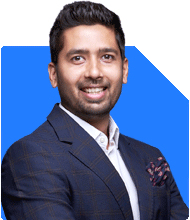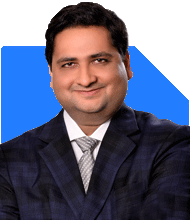Sir, I am 70 years old and retired.
I have 3 crores in shares, 1 crore in mutual funds, 60 lacs in PPF, 30lacs in SCSS AND 15 lacs in PMVVY. This gives me a monthly income of Rs. 50,000, including dividends.
I have recently inherited Rs. 1 crore, and need your advice on where to invest this to get an additional income of Rs. 50,000 monthly.
Thank you.
Ans: You have built a strong and disciplined foundation. At 70, your focus on regular income is correct and practical. Now, let us work on optimising this additional Rs. 1 crore inheritance.
We will take a complete view of your current portfolio, risk level, tax angle, and income need.
Let’s understand your need step-by-step.
Current Financial Assessment
You have Rs. 3 crores in shares. These are market-linked and can be volatile.
Your Rs. 1 crore in mutual funds is also subject to NAV-based fluctuations.
Rs. 60 lakhs in PPF is safe but non-liquid. It won’t help for regular income.
Rs. 30 lakhs in SCSS gives assured quarterly interest. This gives you regular and safe returns.
Rs. 15 lakhs in PMVVY gives monthly pension. This is also fixed and safe.
Your monthly income of Rs. 50,000 is moderate considering your large capital. This should be higher.
Your age and life stage require safety and consistency more than high returns.
You have inherited Rs. 1 crore now. You want an extra Rs. 50,000 monthly from this.
Let us now look at the right steps.
Risk Profiling and Allocation Strategy
At your age, capital protection is most important. Avoid high-risk products.
You can still have a small portion in equity mutual funds for beating inflation.
Majority of your Rs. 1 crore should go into safe income-generating options.
Maintain liquidity to handle any emergency or medical need.
Do not depend heavily on share market income. It is irregular and unreliable.
Prioritise options that give monthly or quarterly payouts directly to bank.
Asset Rebalancing Insights
Rs. 3 crores in shares is large. It is not ideal for your current age and risk level.
Sell a part of shares. Shift to safer regular-income assets.
Use actively managed mutual funds with balanced allocation for controlled equity exposure.
Avoid direct plans. Direct funds may seem cheaper, but no guidance is available.
Through regular plans, you can get advice, monitoring, and service from a Certified Financial Planner.
In this stage, mistakes in execution can cost more than saving fees.
Generating Monthly Income from Rs. 1 Crore
Here is a balanced method to generate Rs. 50,000 monthly from Rs. 1 crore:
Allocate around Rs. 30 lakhs in short-term debt mutual funds. These give better returns than FDs.
Use Rs. 30 lakhs in conservative hybrid mutual funds. These blend debt and equity safely.
Set up monthly SWP (Systematic Withdrawal Plan) of around Rs. 25,000 from mutual funds.
Use Rs. 20 lakhs in SCSS or senior citizen bonds (if limit permits). They give steady interest.
Balance Rs. 20 lakhs can be in liquid mutual funds for any unexpected need.
Keep medical emergency corpus of at least Rs. 10 lakhs separately in safe liquid fund.
Review monthly cash flows every six months with your Certified Financial Planner.
Always match your withdrawals to returns. Don’t draw more than what is earned.
This will give you stability and longevity of funds.
Tax Efficiency Planning
Mutual fund returns are more tax-friendly than interest from FDs or bonds.
SWP from mutual funds gets capital gains tax, not interest tax.
For equity funds, gains above Rs. 1.25 lakh per year are taxed at 12.5%.
For debt funds, gains taxed as per your income slab. But indexation is not allowed now.
Still, mutual funds are better than FDs or other fully taxable instruments.
Senior citizen interest exemptions also apply up to Rs. 50,000 per year under section 80TTB.
Divide investment in multiple family members' names to reduce tax impact.
Estate Planning and Legacy Management
At this stage, start documenting your wishes. It is important.
Make a registered Will. Appoint an executor. Keep nominee details updated.
Avoid joint holding in all assets. It may lead to confusion.
Keep one emergency contact person aware of your financial structure.
Use simple instruments. Avoid complex products with lock-in or market dependency.
Never invest based on any agent's promise. Always consult a Certified Financial Planner.
Avoid ULIPs, annuities, or structured products. They are not suited at this stage.
Mistakes to Avoid
Don’t chase high returns. It invites high risk.
Don’t invest fully in equity now. You already have enough in shares.
Don’t keep too much in PPF. It has long lock-in and is illiquid.
Don’t break your SCSS or PMVVY now. Let them continue till maturity.
Don’t invest in index funds. They cannot protect capital in falling markets.
Actively managed funds are better for your situation. They provide risk control.
Don’t invest directly in mutual funds yourself. It lacks personalisation.
Use a Certified Financial Planner who understands your need and monitors your portfolio.
Health and Contingency Cover
Ensure you have a valid health insurance policy.
It should cover minimum Rs. 10 lakhs. Health costs are rising.
Have a top-up or super top-up cover if possible.
Do not rely only on savings for medical emergencies.
If you have no insurance, use part of Rs. 1 crore to fund it.
Also, plan for long-term care. Homecare or assisted living may be needed in future.
Periodic Review and Monitoring
Your portfolio must be reviewed every six months.
Track the income generated, tax paid, and fund performance.
Ensure your SWP does not exhaust capital prematurely.
Use performance reports and statements to stay updated.
Your Certified Financial Planner should meet and guide regularly.
If your expenses increase, revisit allocation immediately.
Life changes need changes in portfolio too.
Income Laddering Approach
Use mix of monthly, quarterly, and annual income products.
This keeps income steady and protects against sudden gaps.
Create a ladder of maturity dates across 1–5 years.
Use bank sweep-in FDs to park idle money between withdrawals.
Don’t withdraw full returns monthly. Reinvest a part for growth.
This ensures your capital lasts longer.
Finally
Your discipline and foresight have created a solid financial base.
Now, make this base work safely for your needs.
Avoid risky instruments. Use balanced income plans.
Invest in regular mutual fund plans through MFD with CFP guidance.
Use SWP only after asset allocation and planner’s monitoring.
Document your assets and pass instructions to your family.
A Certified Financial Planner will help protect and grow your wealth responsibly.
Review regularly, stay informed, and live with peace of mind.
Best Regards,
K. Ramalingam, MBA, CFP,
Chief Financial Planner,
www.holisticinvestment.in
https://www.youtube.com/@HolisticInvestment






























